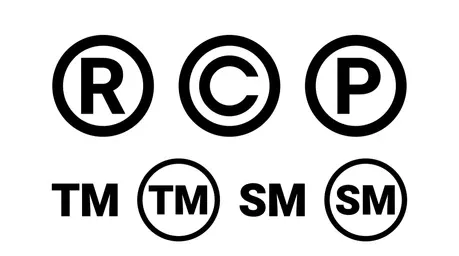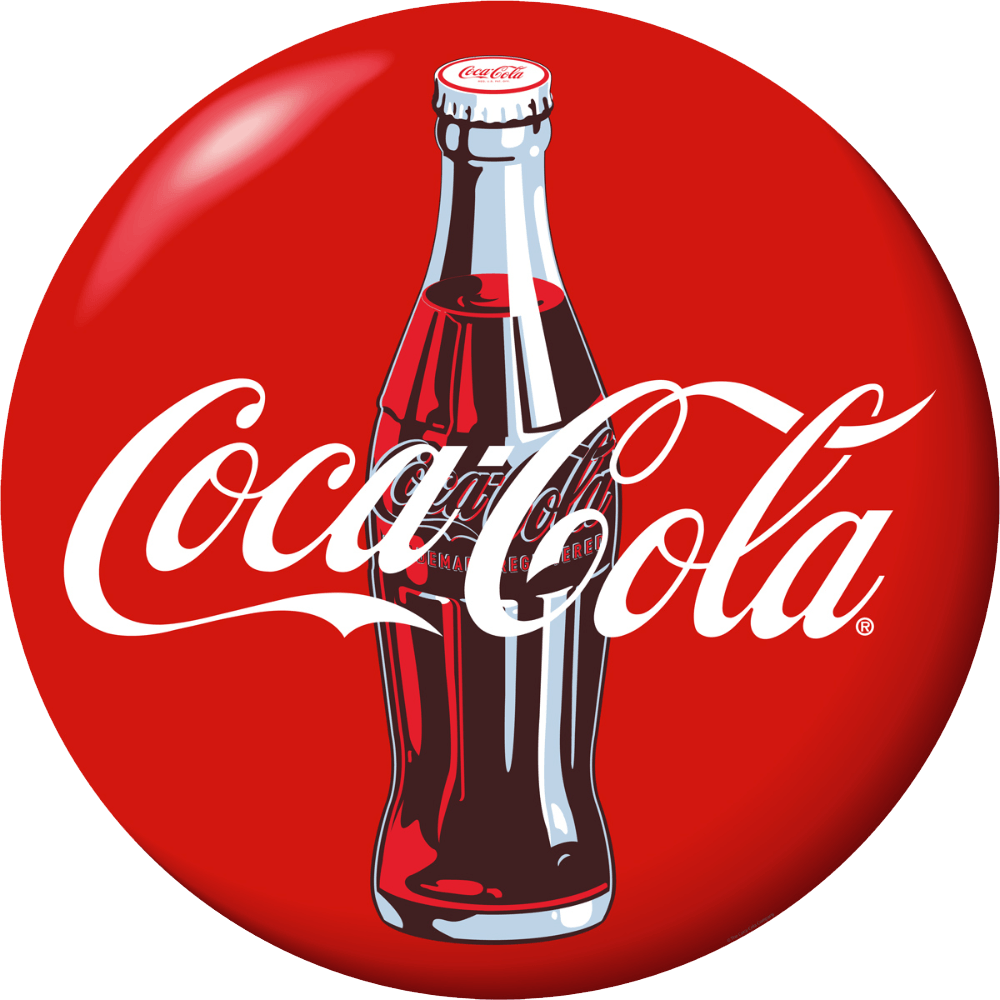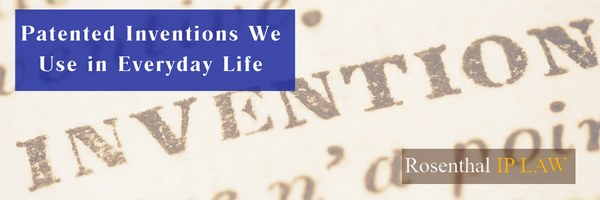TRADEMARKS
Registering your trademark shows investors that you mean business. It also protects your brand when competitors try to emulate rather than innovate.
Home > Areas Of Law > Trademark Law
Trademark Attorneys
Trademarks – The Benefits of Registering a Trademark
When you hire a trademark attorney to protect your brand, others cannot legally use anything confusingly similar to refer to their own brand without permission. By registering your trademark, you can help protect your brand’s reputation. A trademark can ensure that your company name and logo are used only in ways you approve. At Rosenthal IP Law, your trademark attorney and expert in intellectual property law, we will walk you through the process to protect your brand with a federal trademark.
What Is a Trademark Name?
A trademark name is a brand name that meets several criteria.
It must be:
- Not confusingly similar to competing brands.
- An adjective, rather than a noun or verb
This final distinction can help keep your brand from being misused or genericized, so that it may not be referred to any other similar product.
A great example of this is . . .
“Do you have a Q-Tip?” Instead, you’d say:
“Do you have a cotton swab?”
Similarly, you shouldn’t ask someone for a "Kleenex” but instead, for a tissue.
Ideally, a trademark should also be:
- Easy for people to pronounce
- Not too long
- Recognizable or not too complicated
- Simple by design


Speak with a lawyer now
Trademark Law
> Trademark Application
> Trademark Renewal
> Trademark Search
> Trademark Clearance
Do you need help regarding Trademarks? Get in touch with a Trademark attorney at Rosenthal IP Law to learn more about your rights and legal options.

What Is an Example of a Trademark?
You may be surprised to learn that company and product names aren't the only things you can trademark.
You can also trademark a:
- Symbol (example: McDonalds "M" or Golden Arches symbol)
- Slogan (example: Burger Kings "Have It Your Way" line)
- Colors (example: Target's Red Bullseye)
- Sound (example: NBC three-note chime)

What Are the Benefits of Trademark Registration?
Registering a trademark can help prevent confusion in the marketplace. If another company tries to sell products or services similar to yours, you could lose sales. Customers may think they are buying your brand, but they aren't.
Trademarks can also help keep your brand from becoming genericized, which happens when consumers treat all products in your category as if they are precisely the same as yours.
Once you establish your brand as the tops in your field, you want your customers to know they are getting the best quality when they do business with you. A trademark prevents other people from coming in and selling merchandise or services under your name. Other items may not meet your quality standards and could tarnish your brand's reputation and lead to lost sales if consumers get confused.
Trademarks also help people recognize your brand easily.
Having the official ® (registered trademark) service mark next to your name adds credibility and validity to your brand.
Request A
Call Back
What types of Intellectual Property can not be Trademarked?
You can't trademark creative works. You can protect the following types of art by copyright instead of a trademark:
- Written works, including novels or non-fiction books
- Plays / movie scripts
- Poetry
- Art
- Songs
- Films
- Theatrical performances
You also can’t trademark inventions, machines, business processes, or pharmaceuticals. These are protected by utility patents. You can, however, protect the brand names of these inventions with a registered trademark.
Finally, you can’t protect designs or plans with a trademark. You can protect these with design or plant patents, respectively. The intellectual property attorneys at Rosenthal IP Law can also help you with the patent application process.
Trademark Services We Offer
Choosing and Registering Your Trademark:
- “Clearance” Search and Report
- Analyzing what’s out there to assess any problems you may face by using your mark and your ability to obtain a Federal registration for your mark.
- Obtain a Registration
- Preparing, filing, and prosecuting trademark applications before the USPTO (or states, if necessary).
- Obtain International Registrations
- Securing international protection for your marks.
Protecting Your Trademark
- Watch Service
- Monitoring the market and the USPTO trademark database to make sure no competitor starts using a mark confusingly similar to yours or files to register one.
- Analysis of Proper Use
- Making sure you are properly using your trademark everywhere, including in your marketing material, on your website, and on your social media sites.
- Preventing Competitors from Using Your Mark:
- Analyzing competitors’ uses and rights respecting their trademarks and affecting yours.
- Sending cease and desist letters to competitors not respecting your right.
- Filing takedowns from webstores (Amazon, for example) to prevent your competitors from selling on those sites in disregard for your mark.
- Filing oppositions and cancellations.
- Filing an infringement lawsuit.
Rosenthal IP Law
Contact an IP Lawyer Today!
If you need help understanding the best course of action regarding trademarks in your situation, we encourage you to speak with a IP Lawyer who specializes in trademarks at Rosenthal IP Law as soon as possible. Call 908.666.4663
Do I Need to Register My Trademark to Protect My Intellectual Property?
In short, you don't have to register your trademark in the United States to gain protection. A federal trademark filed through the U.S. Patent and Trademark Office offers trademark registration rights across the U.S. However, there are numerous advantages to obtaining a federal registration.
Do I Need a Trademark Attorney to File My Trademark Application?
A trademark attorney can save you time and money through the trademark filing application process. Too many times a business will try to apply on its own, causing problems down the road, including a rejected application or the registration not fully protecting the business. This ends up costing the business more in the long run.
Rosenthal IP Law can help save time and money through the trademark application process.
Call us today at
(908) 666.4663
for help getting your trademark application filed.
See What Our Clients Are Saying...
"We could not hold Larry in higher regard. To have found an attorney that was not only a top-shelf legal practitioner, but also capable of providing legal services in the context of sound business practice was a tall ask. Larry consistently delivered clear, concise legal advice and performance that always exceeded expectations. We have used Larry exclusively and have recommended him without hesitation to our closest business partners."
Brian Giuffrida
Executive Manager, VAPRO Supply
Very pleased! Mr. Rosenthal was professional, diligent, and kept us informed during the entire process of getting our trademark submitted and approved. It is nice using a company that has experience and knows their way around the process. The timeframe was completely inline with what we had been told to expect. We received a true value for our money as the ease and professionalism with which this was handled was well worth it. We are very happy that we used Rosenthal IP Law!
Mark Carty
We Can Help You Protect Your Property, Contact Us Today!
The Best Way to Protect Your Future Is to Take Action Now
Call our office at (908) 666-4663 or fill out the form for a call back. Our lawyers are ready to discuss your case in full detail and confidence
IP Law News



